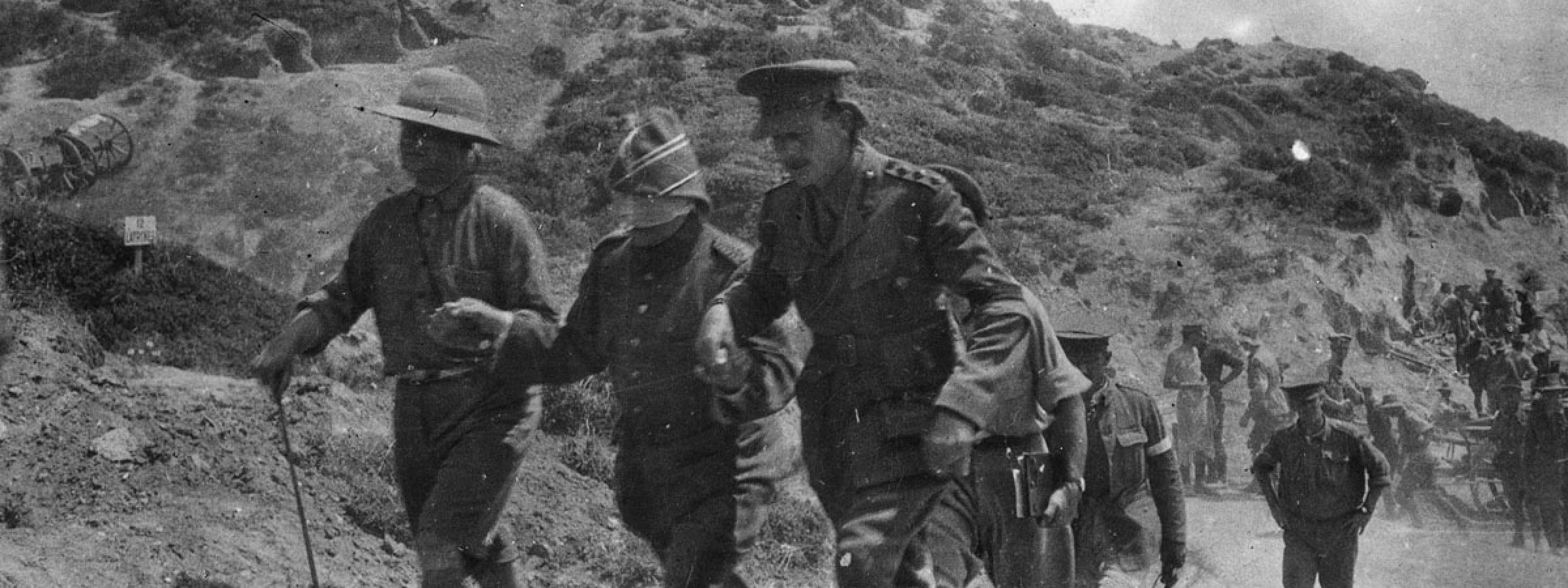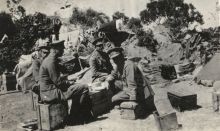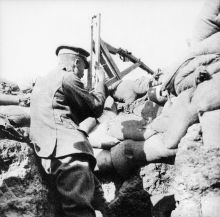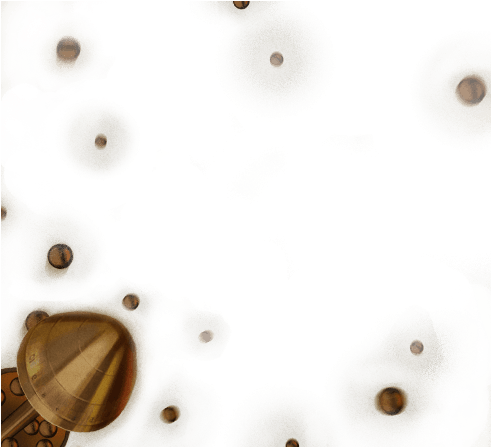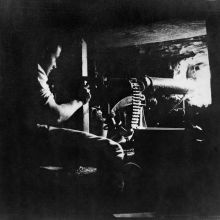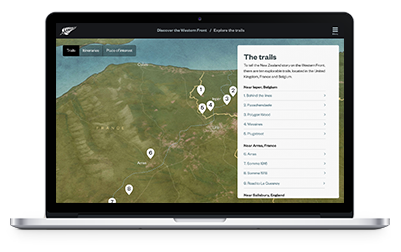On 19 May 1915, around 40,000 troops from the Ottoman Empire – consisting mainly of Arabs and Turks – attacked the territory held by the Anzac troops. The Anzac defenders replied with devastating small-arms, machine gun and artillery fire, inflicting enormous casualties on the Ottoman infantry. There were more than 3,000 Turkish and Arab bodies carpeting no-man’s-land, alongside Anzac and Ottoman soldiers who had died in earlier battles. As the bodies rotted in the sun, the stench became unbearable and there was a high risk of disease breaking out. Both sides agreed to a day-long truce on 24 May in order to bury their dead.
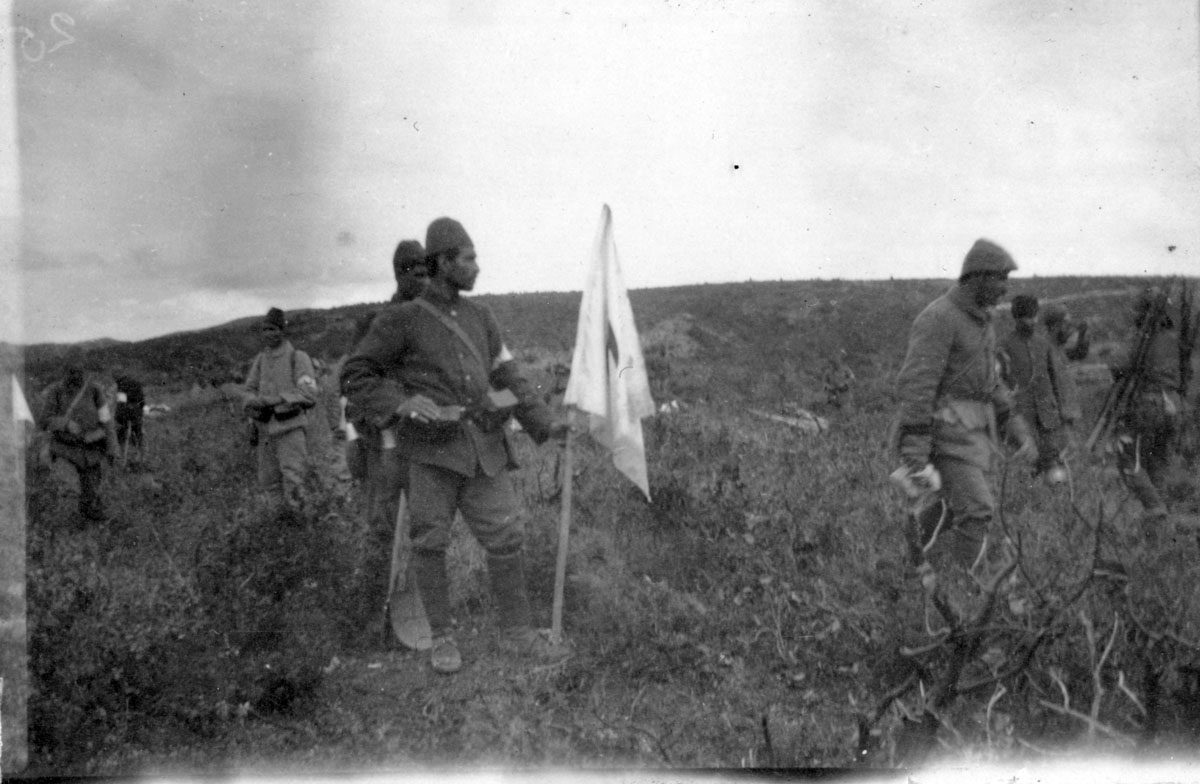
Wairarapa Archive 11-130/2-63
Officers from both armies met midway between the lines, and a line of white flags was set up to show each side how far they could approach the opposite side. Ottoman dead on the Anzac side of the line were dragged to the Ottoman side and Anzac dead on the Ottoman side of the line were dragged to the Anzac side.
Read this audio story
R.A. Sangster's story
"They decided they'd have an armistice and they got to work with the Turks and they had an armistice. And we were given strict instructions. We went over the tops and buried the dead. The Turks were out there too to the dead, you see. Strict instructions: no fraternisation, you see. We were supposed to hate each other, you know. We don't! You don't hate the enemy a bit, you know. You see them dead, and it's a very impersonal business, but you don't hate him. We went over there, we smoked cigarettes. And in no time at all we're giving old Turk a cigarette and he's smoking his cigarettes too and we bury the dead."
It was harrowing work, with the whole space between the trenches strewn with rotting corpses. Vic Nicholson of the Wellington Battalion said the stench was so unbearable that the men worked as fast as possible to ‘get out of it as quick as you possibly could’. Most bodies were too decomposed to move, so were rolled into shallow graves only about 15–20 centimetres underground. ‘As soon as you grabbed a corpse by the arm to drag it over to a hole,’ explained Nicholson, ‘the arm came off in your hand.’ Some graves contained up to 20 bodies. Many men declared they never wanted to undergo such a terrible experience again.
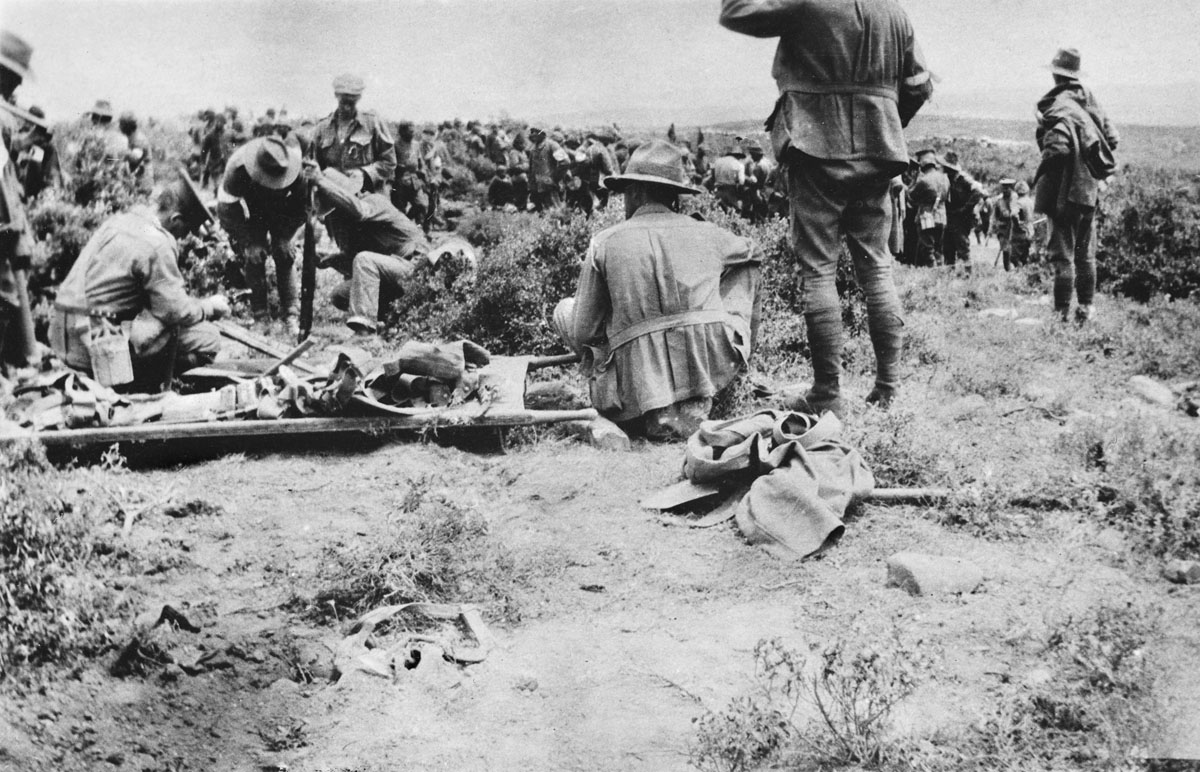
Australian War Memorial A01413 http://www.awm.gov.au/collection/A01413/
When they first landed at Gallipoli, few Anzac soldiers believed that the Ottomans would be a formidable enemy. But the Anzacs grew to appreciate the tenacity with which they fought, and developed a grudging admiration. ‘The attitude of the troops towards this enemy entirely changed,’ said Charles Bean, a war correspondent present at Gallipoli. ‘They became admirers and almost friends of the Turks – “Jacko” or “Abdul” as they called them.’ There was no ill-feeling between the Ottoman soldiers and the Anzacs during the truce, and they even shook hands and talked as far as language difficulties would allow. Both sides spent the day walking round in complete safety and wished each other luck before returning to their respective trenches.
Read this audio story
Changing attitudes towards the enemy
"After the campaign got underway, and of course the troops were locked into front lines that were very close to each other, and they’d observed how well the Turkish soldiers fought, especially their musketry – they were very good snipers. Killed many of our troops from hidden positions. So there was a feeling of respect, I think a grudging respect developed towards the opponents. Often happens in very hard-fought campaigns – I think it happened on the Western Front as well. So attitudes shifted as the campaign continued. And this was sort of reflected quite markedly in the way the troops’ name for the Turks changed from Abdul and more disparaging terms, they began to call them ‘Johnny Turk’, which is not a term of affection, but it’s sort of more like the term Tommy for the British soldier. Johnny Turk, so I think that sort of reflected the changing attitudes amongst the soldiers"
As soon as the armistice ceased, a few shots were fired to mark the resumption of hostilities. There were no recorded New Zealand deaths on 24 May 1915 – the day of the armistice. It was the only death-free day of the Anzac campaign before the August offensive.
Images
Major Kemal Ohri is led by the hand along the beach by two officers from Anzac headquarters as an envoy to negtiate an armistice to bury the dead. Australian War Memorial A05780
Turks burying their dead in front of trenches during the armistice on 24th May 1915. The Australians in front are collecting equipment gathered from their dead and in the back near the group of Turks and Australians is a trench where several dozen dead Turks were being buried. More than 3000 Turks and approximately 160 Australians were killed during the Turkish counter attack on 19 May 1915. Appoximately one million rounds of ammunition were fired during the one day attack. The stench from the dead was so unbearable that the Turks initiated a nine hour armistice so that both sides could recover and bury the dead. Australian War Memorial A01413
Shows Turkish soldiers during the truce of 24 May 1915 to bury bodies, most of whom were Turks killed in the attack on Anzac trenches on 19 May. Most of the Turks wear an armband. The flags denoted the limit that Allied troops could go. The exact location is not given but the rising land behind may be the Baby 700 area. The soldier at right carries Turkish rifles from the battlefield. Several men carry shovels for burial puposes.Wairarapa Archive 11-130/2-63
Audio
Tpr. R.A. Sangster, 1999.3036-1A, National Army Museum, NZ.
